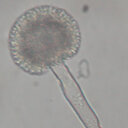Shifting effects of physiological integration on performance of a clonal plant during submergence and de-submergence.
Nyckelord
Abstrakt
OBJECTIVE
Submergence and de-submergence are common phenomena encountered by riparian plants due to water level fluctuations, but little is known about the role of physiological integration in clonal plants (resource sharing between interconnected ramets) in their adaptation to such events. Using Alternanthera philoxeroides (alligator weed) as an example, this study tested the hypotheses that physiological integration will improve growth and photosynthetic capacity of submerged ramets during submergence and will promote their recovery following de-submergence.
METHODS
Connected clones of A. philoxeroides, each consisting of two ramet systems and a stolon internode connecting them, were grown under control (both ramet systems untreated), half-submerged (one ramet system submerged and the other not submerged), fully submerged (both ramet systems submerged), half-shaded (one ramet system shaded and the other not shaded) and full-shaded (both ramet systems shaded) conditions for 30 d and then de-submerged/de-shaded for 20 d. The submerged plants were also shaded to very low light intensities, mimicking typical conditions in turbid floodwater.
RESULTS
After 30 d of submergence, connections between submerged and non-submerged ramets significantly increased growth and carbohydrate accumulation of the submerged ramets, but decreased the growth of the non-submerged ramets. After 20 d of de-submergence, connections did not significantly affect the growth of either de-submerged or non-submerged ramets, but de-submerged ramets had high soluble sugar concentrations, suggesting high metabolic activities. The shift from significant effects of integration on both submerged and non-submerged ramets during the submergence period to little effect during the de-submergence period was due to the quick recovery of growth and photosynthesis. The effects of physiological integration were not found to be any stronger under submergence/de-submergence than under shading/de-shading.
CONCLUSIONS
The results indicate that it is not just the beneficial effects of physiological integration that are crucial to the survival of riparian clonal plants during periods of submergence, but also the ability to recover growth and photosynthesis rapidly after de-submergence, which thus allows them to spread.



